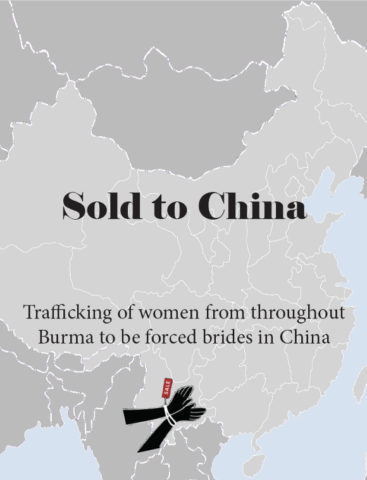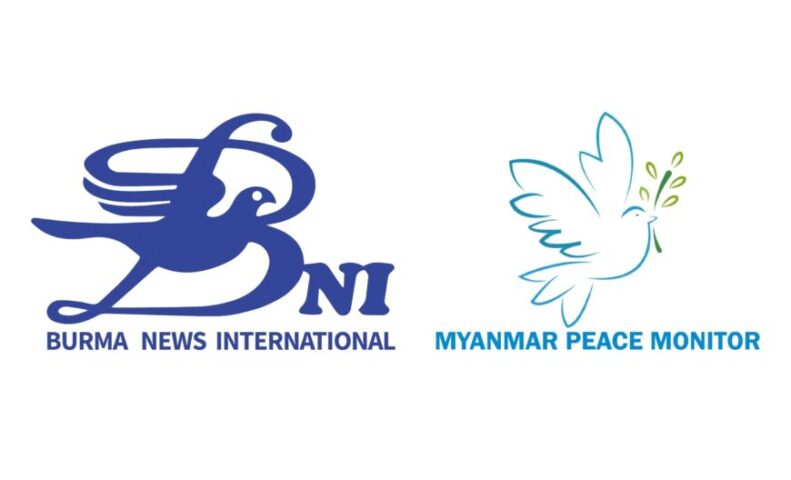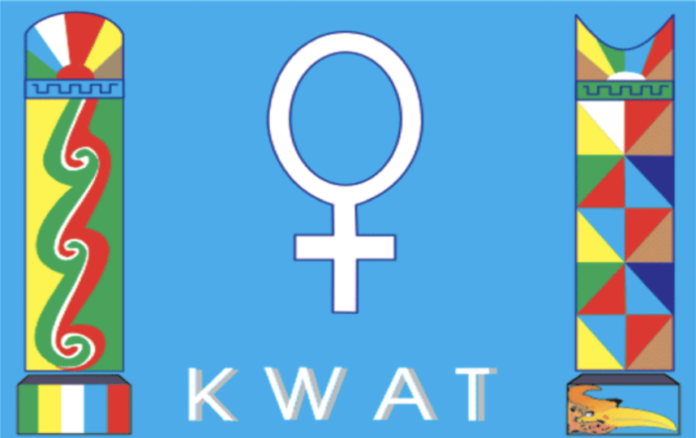An interview with San Htoi, spokesperson for the Kachin Women’s Association Thailand (KWAT), regarding their report on women trafficking victims across Myanmar including Yangon, the situation of forced marriages to Chinese men, and contents of the report.
The Kachin Women’s Association Thailand (KWAT) published a report titled “Sold to China: Trafficking of Women From Throughout Burma To Be Forced Brides in China” on 19 December.
The report reveals that while trafficking victims in previous years were primarily from Kachin State and Shan State, forced marriages and trafficking of women to China have now alarmingly spread across various regions of Myanmar. This finding is based on interviews with 187 female survivors of human trafficking.
This interview with KWAT spokesperson San Htoi explores the situations of trafficked women from across Myanmar, including Yangon which does not share a border with China, the situation of forced marriages to Chinese men, and other findings from the report.
Q: First, please tell us about the key findings in KWAT’s report “Sold to China: Trafficking of Women From Throughout Burma To Be Forced Brides in China.”
A: Our report primarily focuses on women of all ages and analyzes cases across different time periods – before COVID, during COVID, and after the military coup. We analyzed how women were trafficked while seeking work, both along the Chinese border and within the country. The report analyzes trends based on age groups and geographical locations.
We analyzed cases of 187 women. We highlighted how they were trafficked and what factors contributed to it. There are both push and pull factors. The push factors in Myanmar include political conflicts, military conflicts, and severe economic deterioration. Our report highlights how women who were desperately seeking work nearby due to these problems ended up being trafficked.
Q: You mentioned trafficking has increased across Myanmar, including in Yangon. Which states and regions have the highest numbers, and what are the most common methods used to lure victims?
A: According to our report, Shan State and Kachin State have the highest numbers. However, looking at these 187 cases, we say “across Myanmar” because we found cases from Arakan, Magway, and Mawlamyine areas as well. KWAT has published about three trafficking analysis reports before. When we compare this with our previous reports, we see that in the past five years, it’s no longer limited to Kachin and Northern Shan States or just border areas. Cases now come from lower Myanmar as well, including the Ayeyarwady Region. Although our report shows the highest numbers are still in Kachin State and northern Shan State, we found many cases from Yangon and Magway Regions as well.

Q: The report calls on the Chinese government to effectively combat trafficking. In your opinion, what actions could the Chinese government take to effectively prevent these trafficking cases?
A: Based on our findings, while China claims to prioritize border security, we see that their anti-trafficking efforts aren’t truly effective. There are many people coming from Myanmar and neighboring countries for work, and they are accepted as workers. However, without a formal employment system – despite job opportunities existing – there’s no systematic process with proper documentation. This makes women more vulnerable to trafficking.
In our report, we primarily call for the Chinese government to create legal channels and systems for border employment, whether it’s for people from Myanmar or elsewhere. Migration for work is already happening in this world. Our key recommendation is that if there were legal employment channels, it would reduce the number of women falling victim to trafficking.
Q: The report also recommends that Chinese police coordinate with relevant ethnic resistance organizations when repatriating trafficking victims. What impact could implementing this recommendation have?
A: When Chinese authorities repatriate trafficked women, they usually cross through border gates. Now, with the ongoing armed conflict, ethnic armed organizations control larger areas along the border. Their administrative influence has grown. We’ve seen that when victims aren’t sent through military government channels or when they’re sent all the way to Yangon, they face many difficulties returning home. So, a more effective approach, especially for the Kachin and northern Shan, is to coordinate with ethnic armed organizations at the border to find safe routes home.
We’ve found that working with these organizations leads to more effective assistance and support for these women. Currently, when women are repatriated only through military government channels, some face arrest for border crossing violations or have to pay compensation, creating additional problems. This causes double victimization. To prevent such issues and to both prevent trafficking and ensure safe return, it’s crucial for the Chinese government to work effectively with ethnic armed organizations, considering the border situation. This is why we emphasize and recommend this kind of cooperation in our report.
Q: How many women who were trafficked as forced brides to China has KWAT helped? What age groups were most affected, and what were the most common methods used to traffic them?
A: In this report, we helped 187 women. Looking at these cases, the youngest was 13 years old, and they ranged up to around 50 years old. Women who were trafficked multiple times were mostly between 18 and 25 years old. After these women have children or serve as wives in one household, they’re sometimes sold to another. In some cases, if they’re unhappy with their situation, they’re resold elsewhere. We find this happening mostly with younger women. When we look at how these women were trafficked, it’s mostly through friends and acquaintances. They’re lured by promises of jobs, like restaurant work, with salaries that seem very high compared to Myanmar wages.
For example, they’re promised 2,000 yuan, which would be impossible to earn at a noodle shop in Myanmar, but seems possible at Chinese restaurants. So this is how they’re baited. They’re promised jobs in restaurants or factories, but once they enter China, they’re immediately confined in hotels and told they’re actually there to marry Chinese men. Sometimes someone says they’ll come pick them up later, but when they do, it’s to become that person’s wife. We’ve found that recruitment through friends and acquaintances is very common. When internet access became available, we even saw cases of online job recruitment leading to trafficking.
Q: Is KWAT conducting any awareness programs to prevent women from being trafficked as forced brides to China?
A: KWAT has been working on this since publishing a trafficking research report after 2005. Since then, we’ve been consistently conducting awareness programs about migration and human trafficking issues in communities. We provide awareness training to help communities protect themselves, and we work alongside them consistently.
But, due to political and economic conditions, these problems persist. KWAT doesn’t work alone on awareness – we collaborate with other organizations working on migration and trafficking issues to provide consistent public awareness programs in communities.
Sent by Shanni Voice.

